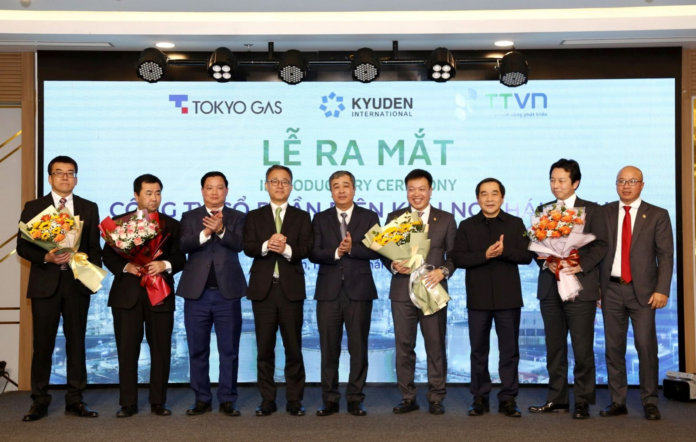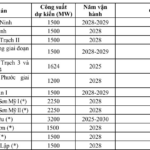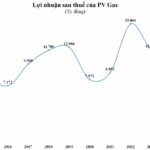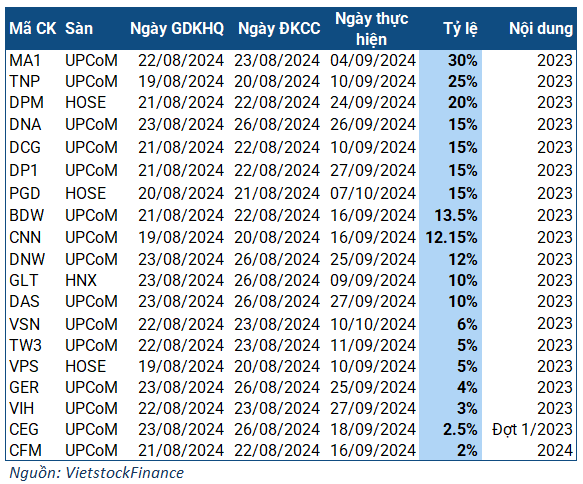The Thai Binh LNG thermal power plant project, with a total investment of $2 billion , is expected to commence construction by the end of this year, targeting the operation of Unit 1 in Q4/2028 and Unit 2 in Q4/2029.
This construction schedule is in line with Thai Binh province’s objective of completing the project’s land clearance before May 2025 and holding the groundbreaking ceremony in September 2025, as set by Chairman of the Provincial People’s Committee, Nguyen Manh Hung, in February 2025.
In December 2023, the Provincial People’s Committee approved the investment policy and investors for the project. The three investors are Tokyo Gas (Japan), Kitakyushu Electric Power Co., Ltd. (Japan), and Truong Thanh Group from Vietnam. The project’s chartered capital is $298.6 million, equivalent to 15% of the total investment, with respective contributions of 40%, 30%, and 30% from the above investors.
The remaining 85% of the investment will be raised through loans and other financial sources.
In January 2024, the three investors established Thai Binh LNG Power Joint Stock Company to implement the project.
According to the investors, the total investment for the project is estimated at $2.56 billion (post-tax), including compensation, support, and resettlement costs (if any); construction costs; equipment costs; project management costs; investment construction consulting costs; other costs; and provisions for contingencies and price fluctuations.

The project will span an area of 263.5 hectares within the Thai Binh Economic Zone. The land area will cover 53.8 hectares, comprising the power plant and technical corridors, while the water area will encompass 209.7 hectares, including the regasification facility, gas supply pipelines, and other infrastructure.
With a capacity of 1,500 MW utilizing Combined Cycle Gas Turbine (CCGT) technology and an expected operation of approximately 6,000 hours per year, the plant is projected to produce 9 billion kWh of electricity annually. The self-consumption ratio is estimated at 2.8%.
The CCGT technology is reported to have half the CO2 and NOx emissions compared to modern ultra-supercritical coal-fired power plants, while not emitting SO2 . Therefore, the construction of this plant will contribute a cleaner source of electricity than coal-fired power plants, helping to reduce greenhouse gas emissions and environmental pollution. It will also aid Vietnam in fulfilling its Nationally Determined Contribution (NDC) commitments.
Moreover, this stable source of electricity will enhance the stability of the power system, especially with the increasing integration of unstable renewable energy sources like wind and solar.

The main fuel for the project will be imported LNG, with an expected consumption of 1.2 million tons per year. Diesel will be used as a backup fuel, requiring approximately 17,000 tons per year, sourced domestically.
Regarding LNG imports, the investors plan to source it from leading LNG-exporting countries such as Australia, Qatar, the United States, and Russia , among others, to ensure competitive pricing.
Currently, Vietnam has only one operational LNG-fired power project, Nhon Trach 3 and Nhon Trach 4 in Dong Nai province. According to the Power Development Plan VIII Revision, the goal is to have 11 such projects in operation by 2028 or 2028-2029.
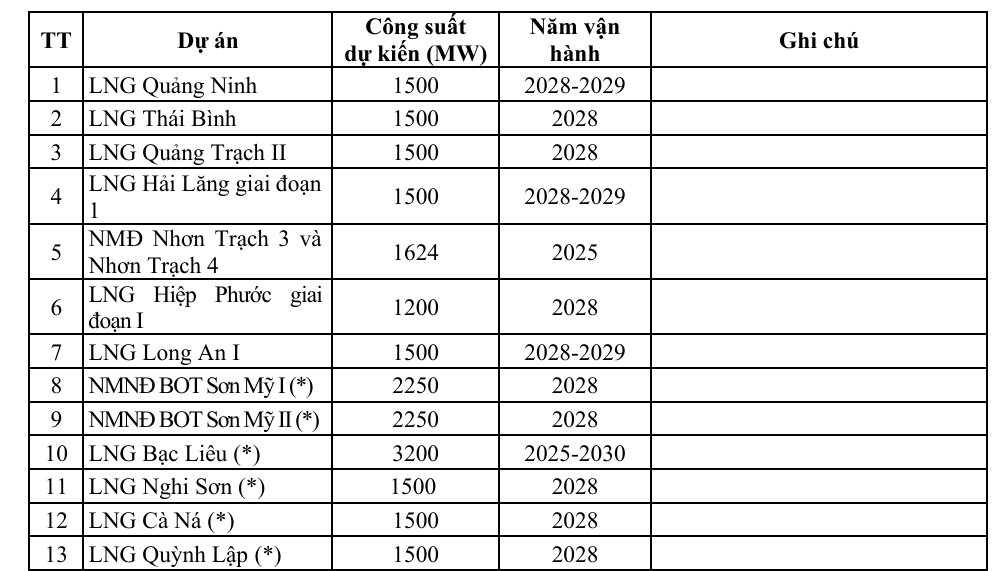
Vietnam is also creating favorable conditions for LNG businesses, including reducing the import tax on LNG from 5% to 2%, as per Decree 73/2025/ND-CP.
Another incentive for LNG-fired power projects is the guaranteed offtake policy. Decree 100/2025/ND-CP, issued in early May, stipulates the minimum long-term electricity contract volume for LNG-fired power projects. This volume is set at a minimum of 65% of the average multi-year electricity output of the LNG-fired power project.
Importing LNG from the United States is also a focus for the Vietnamese government to maintain sustainable trade balance with the US, especially in the face of potential countervailing duties imposed by the Trump administration.
The First $1.4 Billion LNG-to-Power Plant in Vietnam Sets a Date to Power Up, Enough to Light Up 60% of Dong Nai Province
Nhơn Trạch 3 and Nhơn Trạch 4 power plants are set to boost Vietnam’s electricity supply significantly. With a combined annual output of 9 to 12 billion kWh, these power plants will contribute a substantial amount to the national grid, meeting the energy demands of Đồng Nai province, which currently accounts for the fourth-highest electricity consumption in the country. This equates to an impressive 60% of the province’s total electricity consumption, showcasing the immense impact these power plants will have on Vietnam’s energy landscape.
A “Titan” Takes Flight: The $2.1 Billion Project in Nghe An Takes Off
The LNG-to-power project, located in Quynh Lap commune, Hoang Mai town, Nghe An province, spans an impressive 210-360 hectares. This ambitious undertaking has caught the eye of energy industry giants, solidifying its status as a highly anticipated and closely watched venture.
The Golden Grain Belt: A $2 Billion LNG Plant Investment to Boost Local Economy and Rival the VinFast Factory in Revenue
The Thai Binh LNG Thermal Power Plant project boasts a staggering investment of approximately $2 billion, with an electrical output surpassing that of Vietnam’s largest hydroelectric plant by 1.6 times. Upon completion, the plant is expected to contribute an impressive $4,000 billion VND annually to the state budget.


























